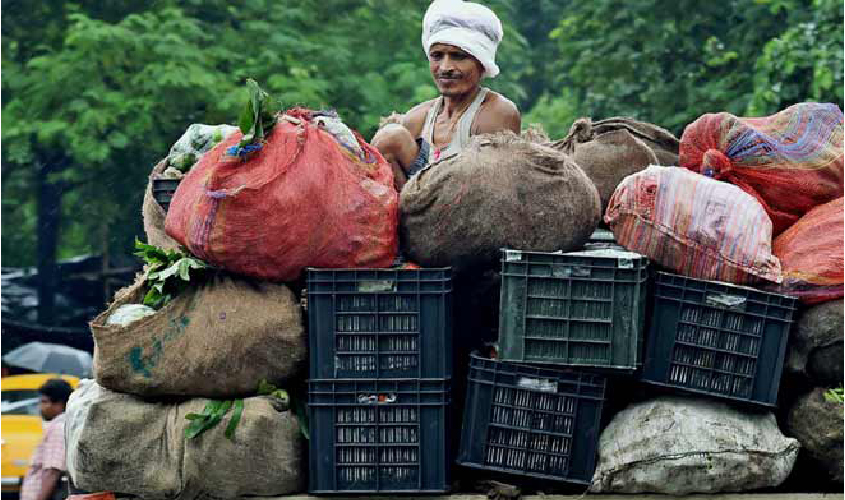According to latest figures, 585 mandis have been enrolled under e-NAM, and 200 more are likely to be connected soon. However, only a fraction of the total commodities produced in India is traded online.
The death of Mulchand, a 65-year-old farmer, after waiting for four days in the scorching summer to get his farm produce weighed and sold in Lateri mandi of Madhya Pradesh’s Vidisha district, has revealed the ineffective functioning of the National Agriculture Market (e-NAM), experts and activists have said.
The National Agriculture Market (e-NAM), which was launched in 2016, is an electronic trading portal that networks the existing Agricultural Produce Market Committee (APMC) mandis all over India in order to create a unified national market for agricultural commodities. The NAM portal extends a single window service for all APMC related information and services. This includes buy and sell trade offers, provision to respond to trade offers, and commodity arrivals and prices.
Anupam, national spokesperson of Swaraj Abhiyan and an agriculture activist, told The Sunday Guardian: “The Lateri Mandi where the farmer Mulchand died was part of e-NAM. The e-NAM, which was launched by the Prime Minister Narendra Modi-led Central government in 2016 with a budget allocation of Rs 200 crore, envisaged facilitating remunerative prices, no middleman and seamless trade with transparency. However, the e-NAM has failed to achieve the aforesaid objectives.”
According to the latest figures, 585 mandis have been enrolled under e-NAM, and 200 more are likely to be connected soon. However, only a fraction of the total commodities produced in India are traded online—most other regulated markets remain beyond the purview of e-NAM. And even in these 585 mandis, most of the procurement is done by government agencies, with very little private participation.“The e-NAM was launched to bring transparency, but after implementation, we have come to know that the same is lacking and that’s problematic. How the prices are set and how farmers sell their farm produce remains a mystery. I challenge that if anyone proves that farmers are getting the Minimum Support Price (MSP), I will leave activism for my whole life,” Anupam said.“The death of a farmer in Lateri Mandi is one case which has become public; most of such cases are buried at the ground level. The distress of farmers is no news anymore. The intent of the e-NAM project may be good, but if it is not improving the conditions of farmers, then it is of no use,” Anupam added.
Pratap Singh Birthal, one of the directors at the Indian Council of Agricultural Research, said: “With e-NAM lacking adequate infrastructure to check the quality of commodities, storage and transportation, the platform is yet to be fine-tuned into a working proposition.” “The absence of internet connectivity in the villages has been creating problems in carrying seamless bidding and trading activities. The volume of arrival of produce at e-NAM mandis is also small. At mandi level also, the volume of physical arrival of commodities at gate on e-NAM mandis is small compared to the total volume in the e-NAM platform and that is posing a challenge to the government. The situation will not see any change unless there is a proper management of the e-NAM concept,” Birthal said.
“If I am not being able to sell my farm produce from the point where I register myself as a farmer/trader and still I have to wait for 10 or 20 days to weigh my produce, then what is the need of such projects? If somebody sitting at home wants to buy mangos from any given e-mandi and wants a quality check, there is no system to provide such facility and that is causing harm to the e-NAM project,” Birthal said.
“The e-NAM project can be proved as game changer but it requires a proper implementation and a state of the art infrastructure. Bringing farmers under the digital roof is biggest challenge. With the half hearted implementation of e-NAM, the chances of emergence of new digital middlemen are high therefore the government should look into the matter,” Birthal added.

